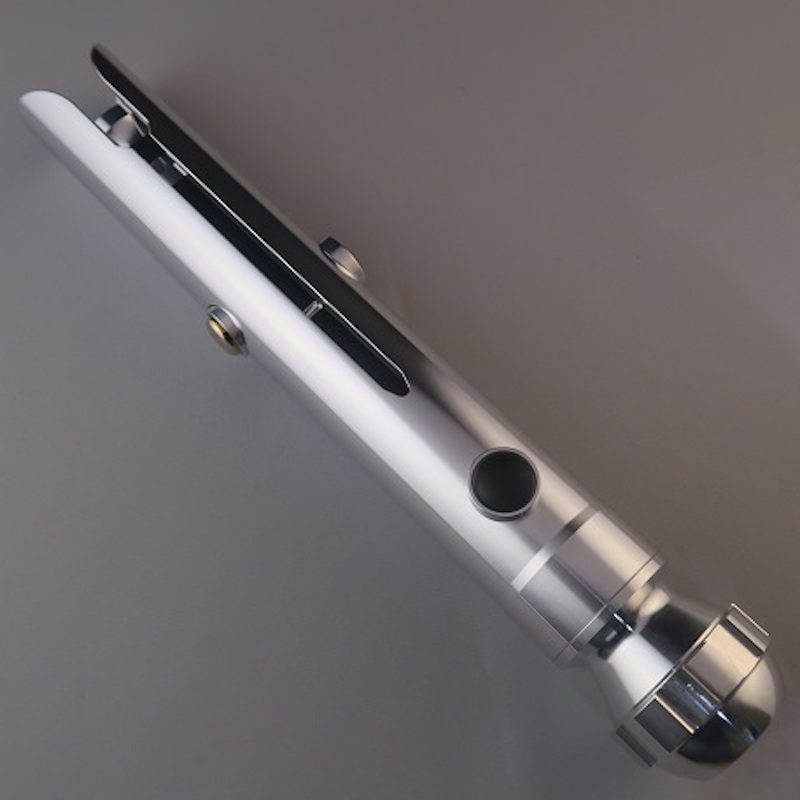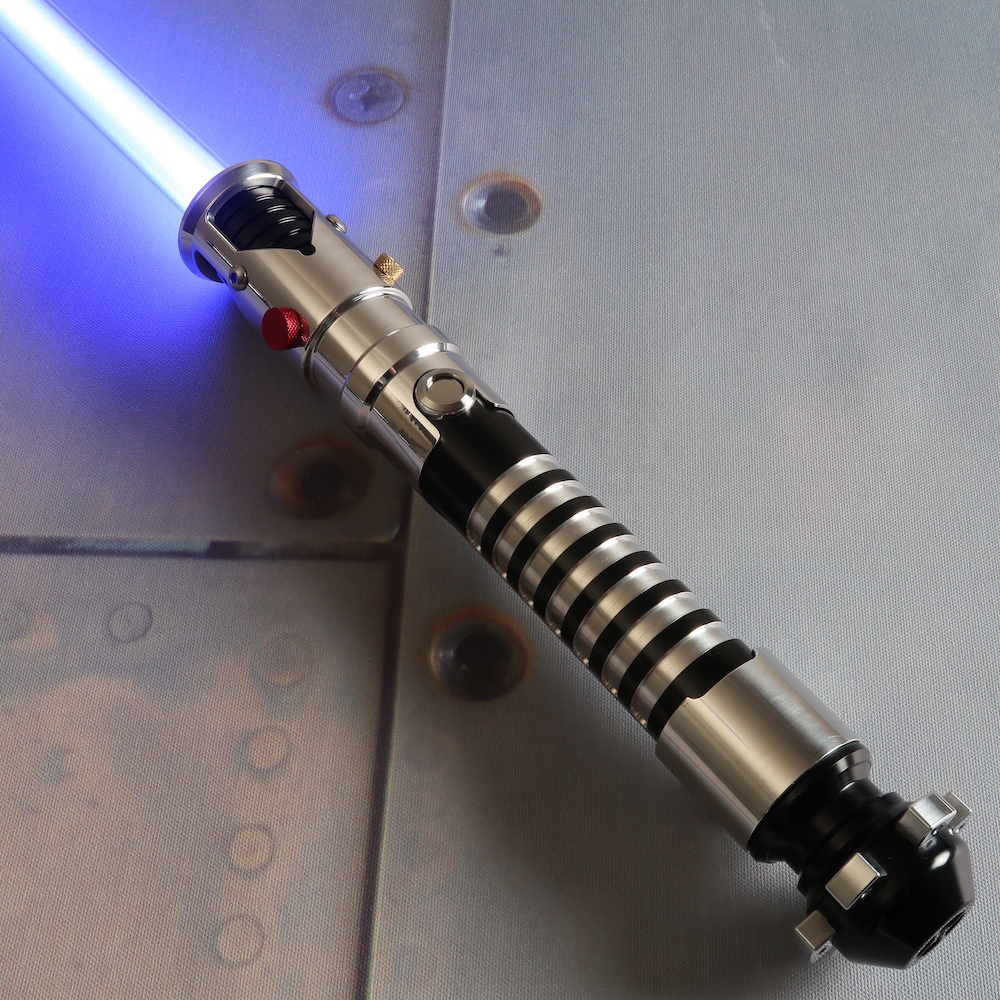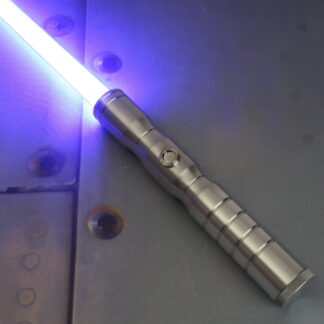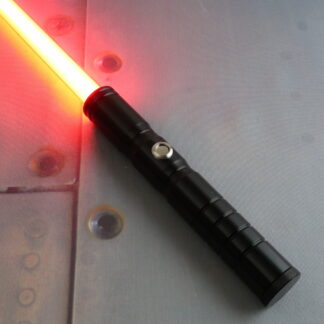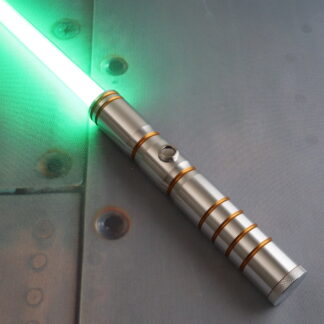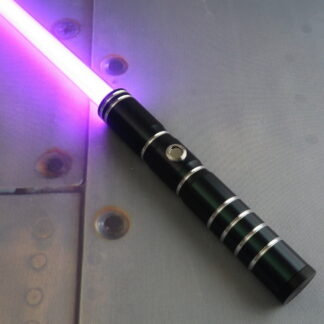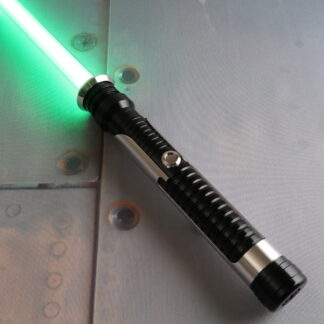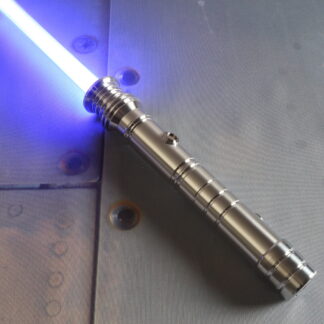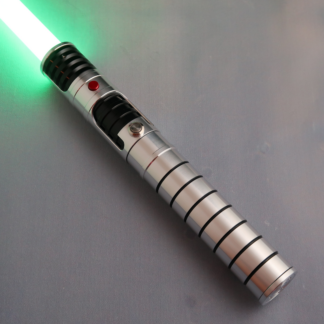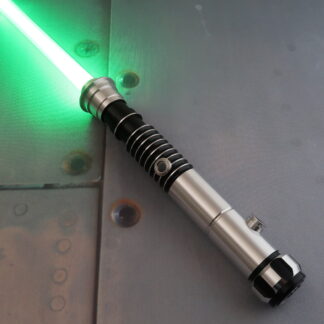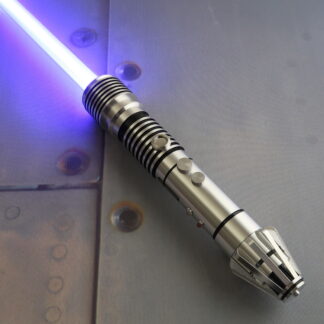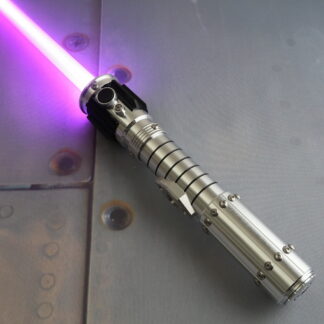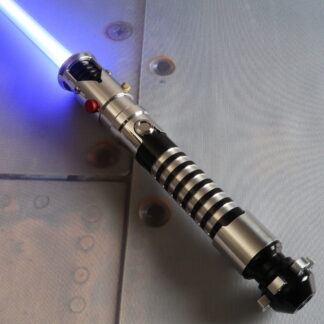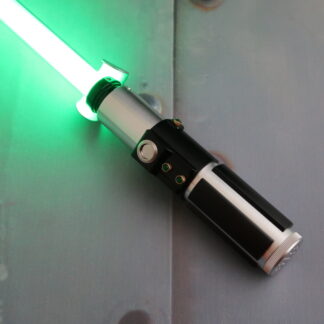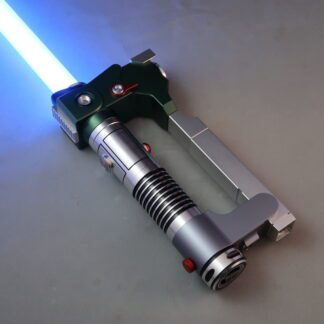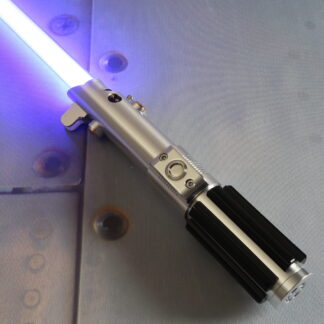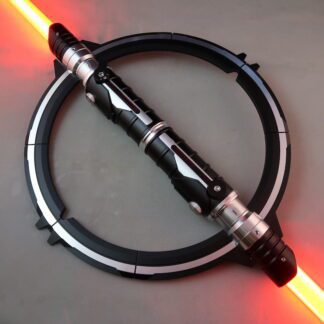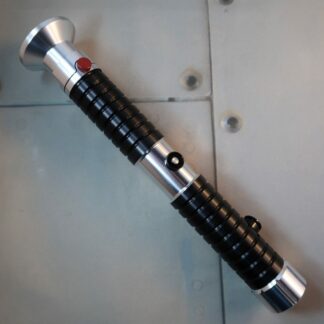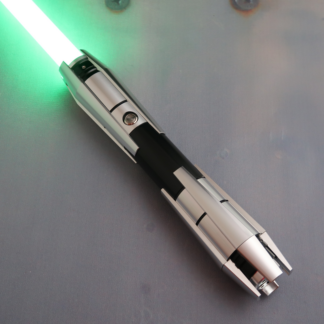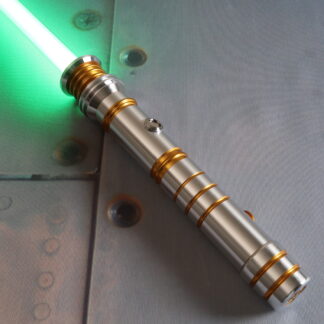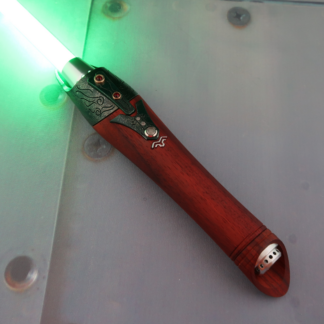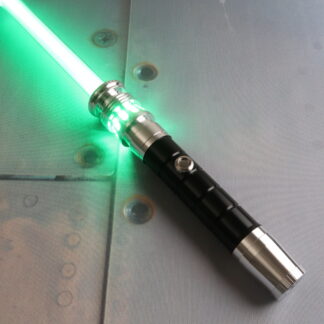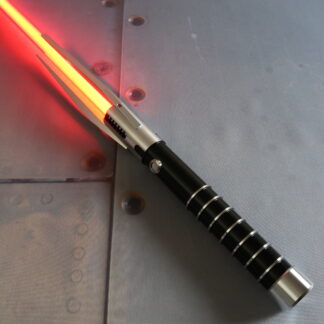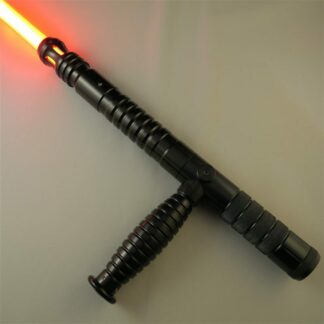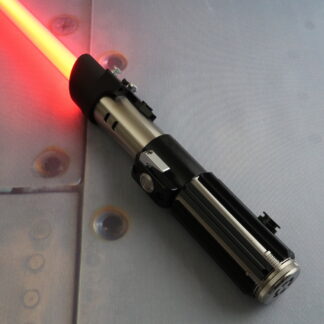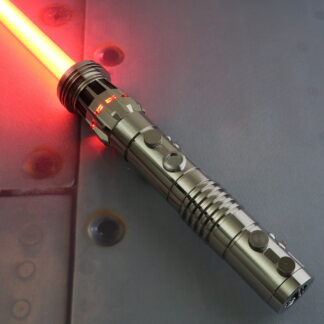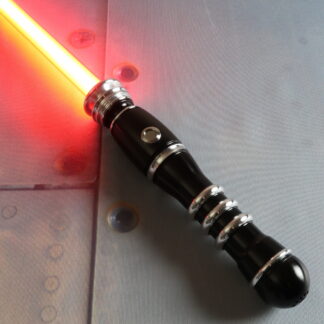Lightsaber Forms and Combat Tips
The galaxy can be a dangerous place, and a strong understanding of lightsaber forms and combat can mean the difference between survival and defeat for Jedi and Sith alike. Although the Jedi are known to rely on peaceful negotiations first and foremost, that does not mean they do not understand the importance of lightsaber combat forms and how each can be used to leverage a battle in their favor. As lightsaber fighting styles have evolved, certain methods have become outdated, yet all forms are acknowledged for their historical and practical importance. This guide covers the 7 forms of lightsaber combat, from the foundational to the most advanced.
The Way of the Saber: 7 Lightsaber Forms
Form I: Shii-Cho (The Determination Form)
When learning lightsaber techniques, a Jedi or Sith apprentice is trained to recognize all 7 forms of combat. Shii-Cho, also known as Form I, the Determination Form, or the Way of the Sarlaac, is the oldest and most elementary form of lightsaber combat developed by the Jedi Order, having been developed in a time before lightsabers were commonplace. Shii-Cho is still taught to youngling Jedi because it is the most basic. Though no longer the predominant choice of Jedi Knights and Masters, this style is known to be used when all other forms of combat have failed. Because this form has such early origins, Shii-Cho is not optimized for lightsaber-to-lightsaber combat and is used predominantly for defense.
Known practitioners of Shii-Cho include Kit Fisto and Obi-Wan Kenobi. Also, in Star Wars Episode IV — A New Hope, Luke Skywalker can be seen practicing Shii-Cho under Kenobi’s instruction onboard the Millennium Falcon.
Lightsabers Great For Younglings
Form II: Makashi (The Contention Form)
Once the Dark Jedi and Sith Lords emerged, Form I became outdated, and the Jedi needed a combative form that was both offensive and defensive, something more equipped for lightsaber-to-lightsaber contact. At this point, many switched to the Makashi lightsaber form, also known as Form II or the Contention Form. This form is both graceful and calculated, relying on balance and complicated footwork to outsmart opponents. In the Makashi form, opponents use only one hand, and with this form, the lightsaber wielder is usually able to disarm their opponent without killing them. Though it’s designed specifically for lightsaber duels, Makashi Form was found to be weak against blasters and ranged weaponry.
Known practitioners of the Makashi Form include Count Dooku, Asajj Ventress, and Jedi Master Ki-Adi-Mundi.
Balanced, One-Handed Lightsabers
Form III: Soresu (The Resilience Form)
As galactic combat changed and blasters became more relevant, the Makashi form of fighting soon became obsolete. Unlike Shii-Cho, which is still used by Jedi, Form III, also known as Soresu, the Resilience Form, or the Way of the Mynock, replaced Makashi (Form II). This lightsaber combat form is known to be the most resilient and the ultimate expression of the non-aggressive Jedi philosophy. Obi-Wan Kenobi, a master of Soresu, was said to be able to block any strike and move with grace.
Another key reason why this method became so prominent was its defensive tactics. A Jedi needs to be able to protect themself from all sides, and Soresu, a defensive-first lightsaber fighting style, is the perfect tactic not only in a duel but to deflect any potential shots coming at the fighter. Practitioners of this lightsaber form are encouraged to stay defensive, striking only when they see an opening. Although many Jedi fighters use Soresu, Luke Skywalker proved himself excellent at this technique while fending off Scout Troopers on Endor.
Lightsabers Great For Defense
Form IV: Ataru (The Aggression Form)
As lightsaber wielders started becoming more skilled and powerful in the force, Form IV, also known as Ataru or the Aggression Form, grew in prominence. Ataru fighting techniques date back to the Old Republic and were even employed during the Mandalorian Wars. Due to its aggressive nature, Ataru became the favored combat style for many Sith and is marked as the second-most kinetically active combat form, aside from Form VII. Much of the Ataru style is affected by how skilled the fighter is with the Force, seeing as it heavily relies on the use of Force-assisted acrobatics.
Like Makashi (Form II), Ataru is most useful in one-on-one lightsaber combat. Relying on a combination of speed, agility, and strength, practitioners of this form stress the importance of battling on the offensive. Before the fall of the Old Republic, both Yoda and Qui-Gon Jinn were some of the most skilled Jedi in using Form IV. In Star Wars Episode III: Revenge of the Sith, Yoda displays his excellence in using the Ataru lightsaber combat form while fighting Darth Sidious. Ataru is not a fighting method that can or should be used by novices of the Force. It is a lightsaber tactic that requires detailed Force knowledge and can only be employed by those who can fully allow the Force to flow through them freely.
Lightsabers Great For Aggressive Duels
Form V: Shien & Djem So (The Perserverance Form)
When observing Form V of lightsaber combat, a good opponent will be able to recognize the two principal disciplines of Shien and Djem So, also known as the Perseverance Form or the Way of the Krayt Dragon. Form V evolved from Form III as a method to not only defend oneself but also give the fighter an opportunity to be on the offensive. Shien, the classical variant of Form V, is mainly used in combat that takes place at a distance, like deflecting shots from a blaster. On the other hand, Djem So was specially designed for lightsaber-to-lightsaber combat. The underlying factor in both Shien and Djem So is to use your opponent’s attacks against them in a counter-strike, emphasizing powerful strikes, quick movements, and effective defensive measures.
Like many lightsaber forms, this one is used by both Sith and Jedi alike, although some Jedi felt that the aggression used in this form was not faithful to the Jedi way. Many large lightsaber-wielding individuals prefer to use Form V because it relies less on acrobatics than some of the other offensive forms. Known practitioners of Shien and Djem So include Ahsoka Tano, Adi Gallia, and Anakin Skywalker.
Lightsabers Great For Deflection
Form VI: Niman (The Moderation Form or the Diplomat’s Form)
Form VI, also referred to as Niman, the Moderation Form, the Diplomat’s Form, or the Way of the Rancor, was developed in order to combine many of the previous forms into one centralized fighting technique. By combining these techniques, Form VI emerged as the first form to neither possess a signature fighting technique nor exhibit a distinct weakness, forming a balance that made it highly adaptable and favored by many Jedi.
Because this method lacks specialization, lightsaber-wielders usually accompany the Niman form of combat with Force-based combat when training in it. Additionally, Niman led to the rise of Jar’kai, not a lightsaber form itself but a technique involving the use of two lightsabers in combat. Known practitioners of Niman include Darth Maul and the Grand Inquisitor.
Lightsabers For The Well Rounded Duelist
Form VII: Juyo / Vaapad (The Ferocity Form)
Finally, the seventh form of lightsaber combat emerged and was referred to as either Juyo, Vaapad, Form VII, or the Ferocity Form. Form VII is the last known form of lightsaber combat and is known to be the most aggressive. Jedi Master Mace Windu is the most famous Jedi known to use this form of combat because Form VII is the most aggressive. Along with being the most aggressive, only the most Force-sensitive individuals can execute this form successfully, which is why Windu is one of the few who can master Vaapad.
When Master Windu fought Darth Sidious, he used Form VII and took the upper hand in the fight. Once Master Windu disarmed Sidious, he was given the opportunity to take out this powerful Sith but knew it was not the Jedi way to murder an unarmed fighter. Windu held back, and as a result, it was not Windu’s fighting skills, but devotion to honor the Jedi Way, that led him to his death.
Lightsabers For The Most Powerful Warriors
Combining Lightsaber Fighting Styles
In general, all lightsaber fighting styles will partially overlap with another form. Each lightsaber combat form has its own distinct look, but throughout the course of a duel or lightsaber battle, many different lightsaber forms may be used. When deciding which form of combat to use against your opponent, you must evaluate many things.
Many Jedi Knights are trained to fight defensively, aiming to preserve life whenever possible. Thus, when determining their method of battle, they carefully consider how to achieve maximum efficiency with minimal loss of life. When a Sith or Dark Jedi chooses a combat style, they will usually be looking for the lightsaber form that is most effective against their given opponent.
Additional Lightsaber Combat Tips
It is widely thought that the only thing that can block a lightsaber blade is another lightsaber blade. This is false. There are many materials that are impervious to a lightsaber beam. Water, for instance, is a substance that lightsabers are unable to function in if immersed. The beam will begin to sizzle, and the utility will be severed.
Another resistant material is ultrachrome. This material could block blasters, projectile weapons, and lightsaber blades by diffusing the energy across its surface. An additional restraint material is Cortosis. This is by far the most common restraint and has the ability to short and deflect lightsaber blades. Avoid these substances at all costs, or your lightsaber and performance will suffer.
While in combat, it’s often difficult to remember simple strategies to use to improve the outcome of the battle. Use these techniques to help you embody true Jedi qualities.
- Survival Mindset: The first lightsaber combat technique revolves around mindset. Although you may just be sparring, having the mindset of survival will better your chances of winning. Don’t just put on a performance with calculated actions and steps, instead, duel as if each movement can get you closer to your end goal: victory.
- Understand Your Lightsaber: Second, always remember that your lightsaber is an elegant weapon and not just a piece of plastic and metal. Get to know the various leverage points on your lightsaber in order to strike your opponent with strength and fortitude.
- Practice Technique: Third, while in a duel, utilize basic fencing techniques; feint, dodge, and pause. Feints involve the act of launching one or more fake attacks against your opponent. It’s easy to get into an endless series of strike on strike on strike, but by applying these simple rules, your battle will be much more enjoyable.
- Seek to Disarm: Fourth, it is common for a combatant to stop fighting when he or she gets too close to their opponent. Instead of forfeiting, employ a disarming approach to disable your opponent and triumph.
- Pay Attention to Footwork: Lastly, move your feet! The best lightsaber battles incorporate excellent footwork. Although many lightsaber fights typically have combatants standing with their feet planted stationary, it looks stiff and inept, and it can cause one to lose a leg in an instant. Moving around during a battle can help you stay in that survival mindset, as well as open up opportunities to strike or disarm your opponent.
Safety First – Start with Shii-Cho
When joining one of the worldwide lightsaber combat groups, certain protocols must be followed to ensure the safety of everyone in the group. Just as Jedi younglings begin to learn the art of the lightsaber in the Shii-Cho form, many groups require mastering the Shii-Cho form before engaging in more elaborate lightsaber combat forms.
Beginning with Shii-Cho is not only the safest way for beginners to test out their lightsaber abilities, but it is the most authentic way to train in the art of lightsaber combat.
S.A.B.E.R.S
In order to practice the safest lightsaber fighting styles, follow the S.A.B.E.R.S acronym.
- S is for safety. Always ensure your saber is secure before forgoing a fight. Check for loose blades, grips, and straps.
- A stands for awareness. Get to know your surrounding area and become aware of objects that can obscure your fight. There’s nothing worse than accidentally hitting an unseen item and damaging your blade.
- B is for batteries. Keep a new supply of batteries with you anytime you leave for a battle or convention. You wouldn’t want a lightless saber!
- E stands for experience. No matter what saber you own, the experience you have with it will be incredible. Get acquainted with your saber and learn its many quirks and elements. The more experience you have with your lightsaber, the better your performance will be.
- R is for restraint. Don’t aimlessly swing your lightsaber around uncontrollably. Additionally, random dueling can result in injury. Know how much your saber can withhold and act accordingly.
- S stands for share. Share the experience of owning a lightsaber and the happiness it brings to you and those around you. Inspire people to wield an elegant weapon just like yours. Sith or Jedi, you can share your teachings with the next generation of Force users.
Train in the 7 Lightsaber Forms with Combat-Ready Sabers from Ultrasabers
Many saber-dueling enthusiasts choose to fight with the most authentic, durable battle-ready lightsabers from Ultrasabers. Although there are infinite ways to customize your lightsaber, there is one thing that all of our products have in common, and that’s quality. Some of the sabers you’ll find at Ultrasabers may look familiar, as many of our designs closely mimic those you’ve seen in the Star Wars movies with character-inspired lightsaber models. Our products have been battle-tested and combat artist-approved time and time again.
Ready for Battle
To get the most out of your next lightsaber duel, practice the 7 forms of lightsaber combat and choose a fighting style that best fits you. Remember to also practice the S-A-B-E-R-S safety techniques to ensure a safe battle. Invest in a quality lightsaber that won’t break mid-fight and cost you your life. Then, learn your combat style, find some other awesome Star Wars enthusiasts, and see who is strongest with the force!
And may the force be with you, always!


